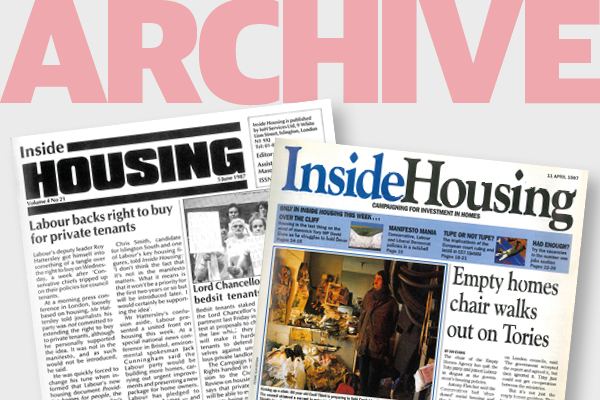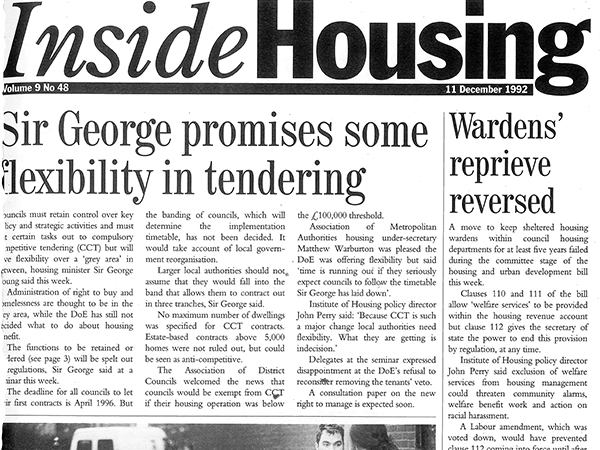You are viewing 1 of your 1 free articles
From the archive - the outsourcing of council housing functions
Inside Housing looks back at what was happening in the sector this week five, 15 and 25 years ago
25 years ago
Inside Housing’s front page gave a snapshot of efforts to privatise and contract out some functions until then carried out by local councils (see below).
Sir George Young, then housing minister, had begun to give details on which functions would have to be contracted out under ‘compulsory competitive tendering’, and which would remain in-house.
Councils would retain control of some key functions, others would have to be contracted out, and still others would be in a “grey area” – including the administration of the Right to Buy and homelessness. The government had not yet decided what to do about housing benefit.
Councils would be banded, which would give them a timetable for contracting out different activities. Councils would be exempted from the process if their housing operation was below a £100,000 threshold.
15 years ago
The Labour government was making radical plans to grass over areas of abandoned housing and build more homes on the green belt, Inside Housing reported on its front page.
The Office of the Deputy Prime Minister had been looking at plans to turn areas of demolished housing, where demand for homes was low, into open space.
The approach had been piloted by the Housing Corporation in the North East of England, but never taken up more widely.
Many of the estates suffering from low demand were in “peripheral locations” that lacked green space.
“Local authorities have a real opportunity to reconfigure neighbourhoods and not just demolish and concrete over the area,” said junior housing minister Tony McNulty.
Alongside this, the magazine was expecting the government to loosen restrictions on building on the green belt in areas of severe housing pressure such as Cambridge.
The unpopular measures were likely to be “sweetened” with measures to improve the design of new homes and promote more sustainable construction methods.
Five years ago
Some social landlords were choosing to ignore or even disband tenant and resident associations which did not agree with their plans for stock transfer or estate regeneration, Inside Housing revealed, based on a report by the Building and Social Housing Foundation.
Many tenants believed their local authority landlords were “silencing or marginalising dissenting voices”, the report warned.
Inside Housing tracked down examples such as a tenants’ association in the North of England which saw its funding cut after relations broke down with a housing association, which then regarded it as having “ceased to exist”. A London local authority started to leave a tenants’ federation off the list of groups it consulted.









